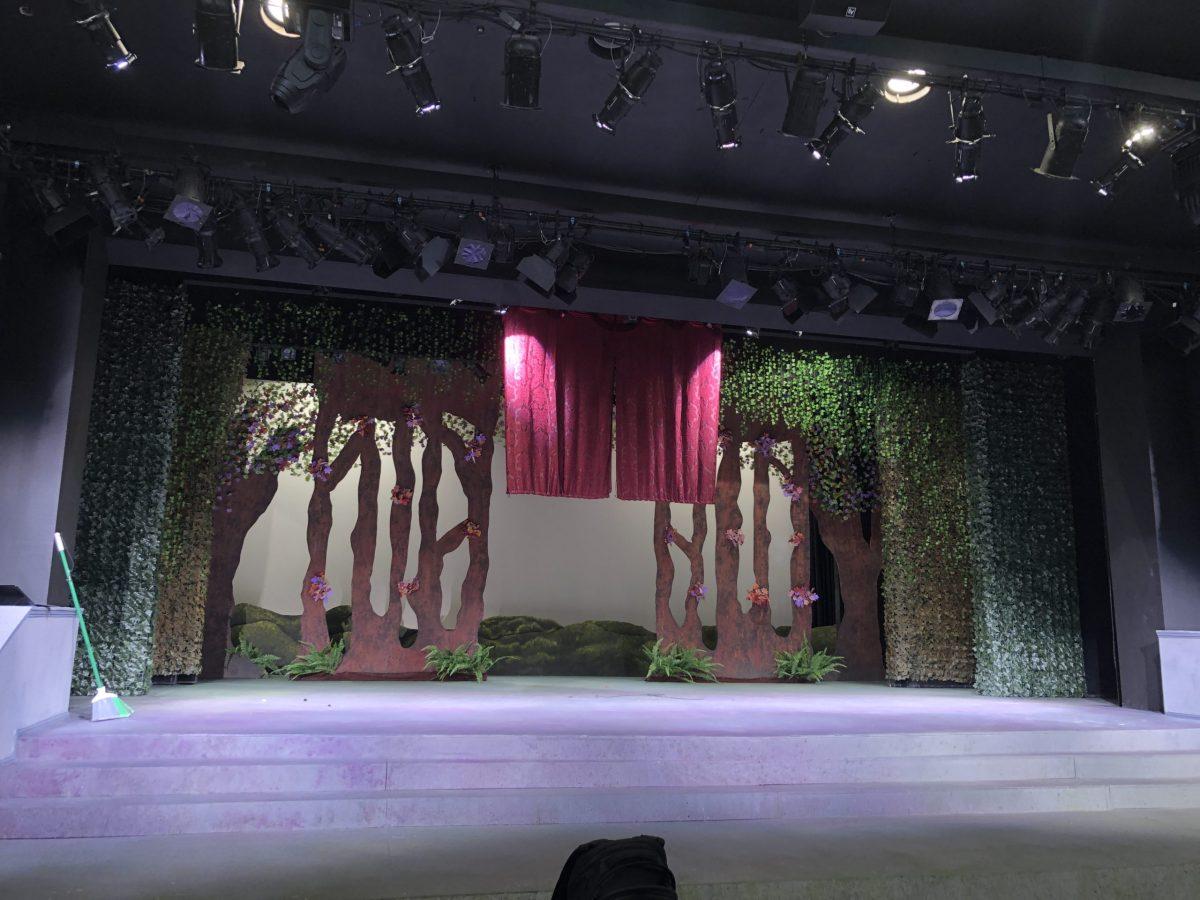“The course of true love never runs smooth,” reflects the character Lysander in “A Midsummer Night’s Dream.” Neither does the course of putting on a play, but the Rutgers-NJIT Theatre Program is defying Lysander’s musings. The theatre program is performing Shakespeare’s quintessential romantic comedy, “A Midsummer Night’s Dream,” from Wednesday, April 27 to Sunday, May 1. The play revolves around the misadventures of two young couples in the forest as they happen to fall under the magic of sprite Puck, sent by King Oberon of the fairies to bespell his wife Queen Titania.
“A Midsummer Night’s Dream” plays out in both the stone courtyards of Athens and the surrounding wild forests. These represent the domains of the human characters and the fairies respectively, and events occur in different ways in these two locations. Humans who are sensible and think logically in Athens, surrounded by neat stone benches, are much wilder and emotionally driven in the flowering, untamed forest that is the realm of the pixies. Therefore, it was key to clearly delineate these two environments on stage. To exemplify the human world, the theatre crew built a low mock stone dais very slightly raised above the seats above the first row, which is the lowest part of the stage altogether. When standing on this platform, the cast will be but a few feet away from the first row and nearly eye-to-eye with the audience. Ray Gintner, Manager of Theatre Operations, explained that the physical proximity of this part of the stage to the audience symbolizes that when they are on the dais, the characters are in the human world and behave in a manner most relatable to the audience.
The second part of the stage is the back portion, containing a darkly vibrant forest patterned with vines. As work on the set is still ongoing, the lighting was stark white, but on opening night, colored lighting will shine on the forest, making the colors pop further. Two side walls covered in faux green ivy represent the boundary between the fairy world and the human; Gintner noted that no fairies ever cross this boundary except Puck, the fairy who meddles with human and fairy emotions. The fairy realm is farther away and higher up than the human world, showing that when characters venture further back on stage, they stray further from human behavior or rules. Drew and Gintner explained that in addition to the dialogue and body language of the actors, the layout of the stage itself enhances the meaning of the play and the characterization of the main roles.
Dr. Michael Kerley is the Associate Director of the Theatre Arts and Technology Division at NJIT. He has directed over 150 performances in a career spanning over 50 years and is the director of NJIT’s production of “A Midsummer Night’s Dream.” On the characters’ entry into the fantastical woods, Kerley commented, “The transition to the woods is more frightening and ominous because back then, people really believed in witchcraft and spirits.” This performance is special because it’s a very insightful play, he added. “It’s enjoyable seeing our worst and best selves on stage.” He believes that being forced to read Shakespeare in class has given students the wrong impression of these plays. “[Shakespeare] wrote this to be performed and for audiences to react to it live. It’s universal – about the human experience.”
Emmanuel Odekunle is a senior majoring in biology who plays King Oberon of the fairies, a principal role. He has participated in theater since his first year of high school, but usually plays roles in musicals, which involve delivering dialogue, singing and dancing throughout the show. As he was working through the process of playing Oberon, he realized how multidimensional the character is; although King Oberon is authoritative and frightening, it is his compassion for the happiness of a human girl that sets the play into motion. An unexpected challenge for Odekunle was developing a unique style of enunciation that would allow him to convey the meaning of each Shakespearean English line so that audience members will be able to understand the dialogue and plot even if they aren’t familiar with Shakespeare. “An unexpected fun part,” he added, “was trying to emulate the physical gestures of Oberon. I needed to walk slower, to hold myself in a different way. My movements needed to be purposeful.”
“A Midsummer Night’s Dream” is ideal for college audiences — with themes that include the exhilaration of love, the well-intentioned foolishness of young people and copious jealousy and mischief, Shakespeare tells an age-old story of human nature that is still true today. “My hope for the audience, more than anything,” said Kerley, “is that it will be so different from what they think Shakespeare is. They’re going to laugh, they’re going to see themselves echoed on stage, and they’ll really enjoy it.” One of Odekunle’s favorite lines from the show is “Love and reason keep little company these days.” He hopes that audiences will take away the lesson that intense emotion can drive people to devolve into reckless and maddening actions.
The Rutgers-NJIT Theatre Program usually performs musicals in the spring, but this year elected to do a play instead. After over two years affected by the current pandemic, “A Midsummer Night’s Dream” is the first rehearsed play to be held in-person, with 20 cast members. It was a deliberate choice. “You see these groups,” said Kerley, “and that’s what human beings want. To be and communicate with other human beings. We’re trying to get people to understand the thrill of a live performance, of reacting as a group, of being together watching something.”
The Rutgers-NJIT Theatre Company is hosting “A Midsummer Night’s Dream” from April 27 to May 1, at 7:00 p.m. every day and at 2:30 p.m. on May 1. Tickets are only $10, and you can order them online by scanning the QR code on the poster!






























